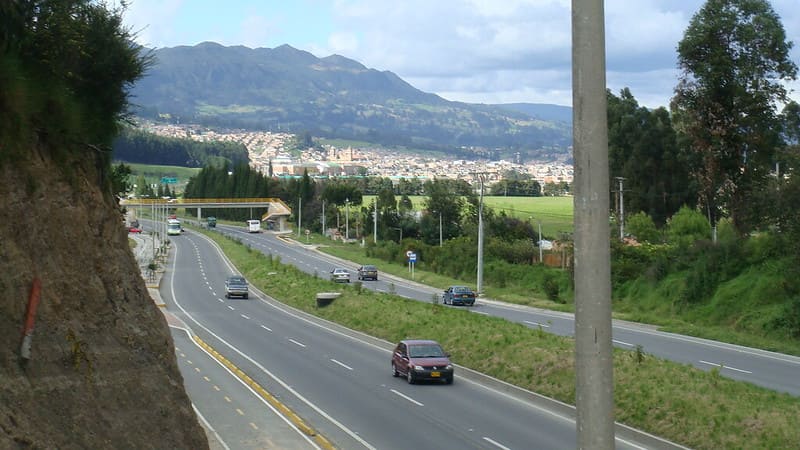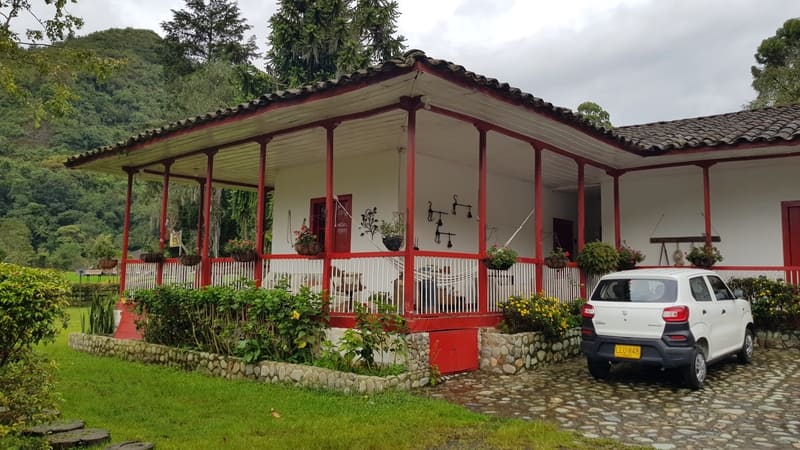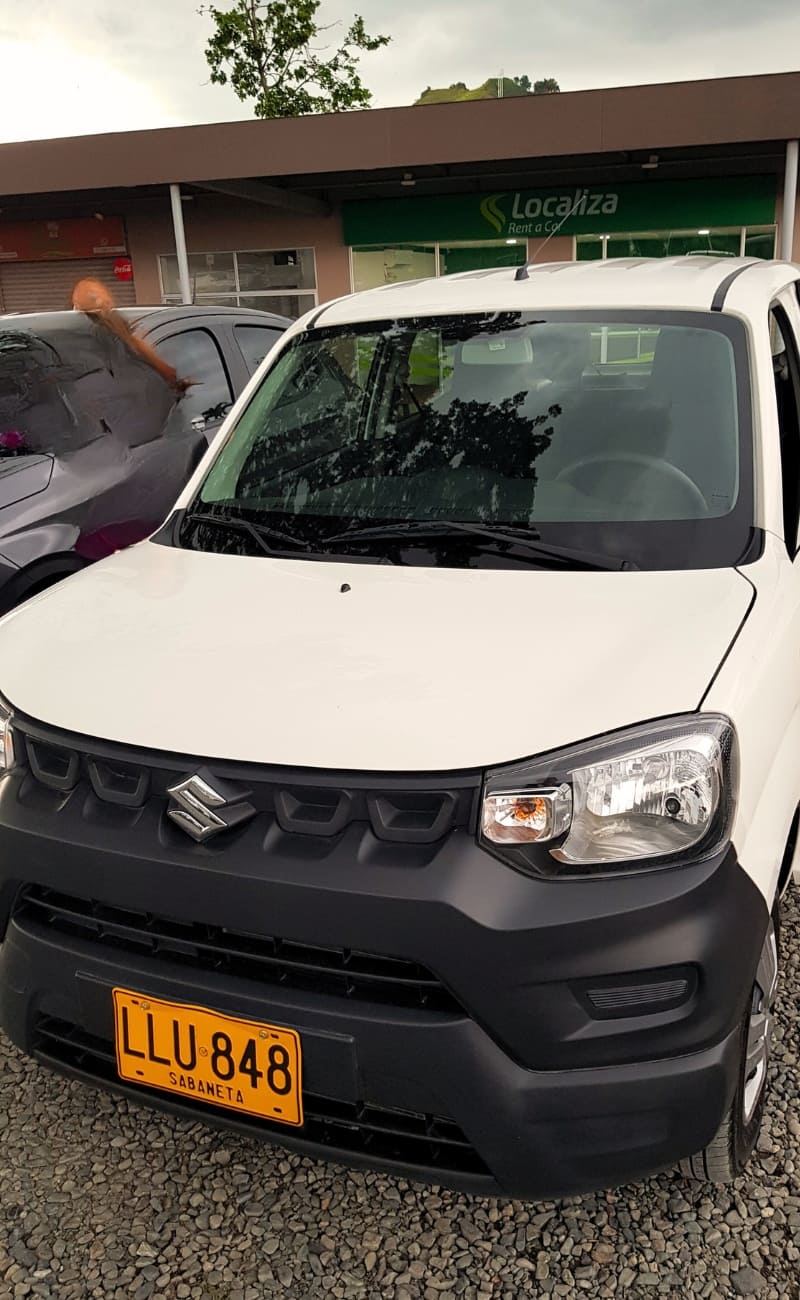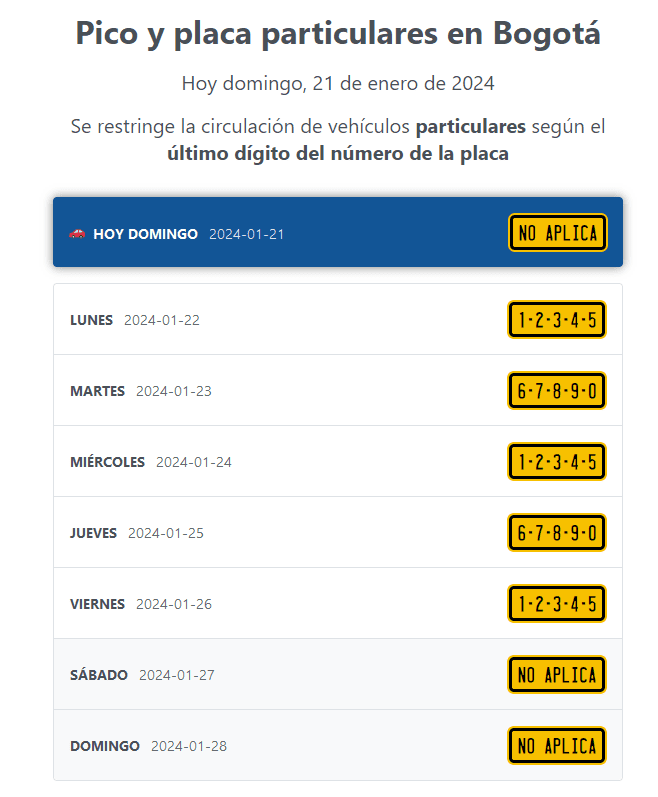Having a car during your visit to Colombia can mean you have more freedom, more spontaneity and can visit even more of this amazing country. The intercity road network is now mostly very safe with well-maintained roads while driving in major cities is far easier than it has ever been.
That said, there are many factors to consider when working out if driving is right for you. Colombian roads can be dangerous, you need to ensure you follow unique restrictions, have all of the right paperwork and know where you should avoid.
I have lived in Colombia for 15 years and drive around my home city of Medellin plus taken long trips around the country. In this article, I will discuss when and where driving may be right for you.
Driving in Colombia: an Overview
Renting a car gives you a lot of flexibility and is particularly useful to get out to the villages and fincas surrounding major cities.
In Medellin, for example, many thousands of people spend their weekends at “fincas” (farms or rural country houses) over the weekends. There are over a dozen very popular villages which can be reached in under 2 hours by driving with a range of climates. While it is possible to get there on a bus or with a tour group, these are very safe, well-maintained routes that are easy to drive.
Driving also makes it easy to have a flexible schedule when traveling between cities, you can stop off at interesting sites along the way and go with the flow.
Within larger cities, the main roads and highways are relatively easy to navigate with Waze or Google Maps. There are many areas you should avoid although it is unlikely you would stumble across these if you take the fastest route on your map app.
If you take the wrong turn however you could find yourself on a near vertical incline in a sketchy neighborhood with a bus behind you begging you don’t stop your forward momentum or you are both only going backward. I have lived in Medellin for 15 years and I don’t think I have ever gone a week without seeing a car crash.
Parking in major cities is also quite expensive and in certain areas hard to find. It may cost more to park for 3 hours than it would have cost to get there and back in an Uber.
There are certain circumstances when renting a car can really add to the experience but it is likely in major cities that even if you have a rental car it will prove easier and more cost effective to order an Uber.
On long rides between cities most of the roads you will use are perfectly safe with military and police checkpoints along the way. That said, you should always do your research because there are still large areas of the country where illegal armed groups retain a significant level of influence or overall control.
Traveling between cities on a bus means you have fully reclinable seats, Wi-Fi, air conditioning, entertainment systems, food stops and peace of mind. Buses run regularly between the main routes and you should be able to sleep the whole way. Check my buses in Colombia guide here to know more.
It is also important to remember that you will always be expected to overtake what is in front of you by the car behind or they will be plotting how to overtake you. Unless the road is clear or has 2 lanes, which is very rare, there is no relaxed, carefree cruising.
What documents do I need when driving to Colombia?
To drive in Colombia you need a valid driving license, passport and a SOAT certificate (Seguro Obligatorio para Accidentes de Tránsito).
SOAT (pronounced So-At) is third party vehicle insurance and this is the minimum, although it is of course recommended to have something more comprehensive.
The passport may not be requested but to be able to drive solely using your foreign driving license you should be able to prove you are visiting on a 90-day tourist visa.
If you have a long-term work visa or residency, you are expected to acquire a Colombian license. A photocopy of your passport and the relevant entry stamp should be enough in most instances.
Do I need Colombian car insurance?
To drive in Colombia you need SOAT (Obligatory Transit Accident Insurance) as the minimum which protects other drivers in the instance of a crash or accident.
Do I need an international driving permit?
If you have proof of entry to the country on a tourist visa valid for 90 days or fewer plus a valid international driving license then you do not need an international driving permit.
How do Colombians drive and how safe are the roads?

After years of driving, I still can’t decide if Colombian drivers are very good or very bad.
The roads are chaotic, people switch lanes constantly, often drivers don’t know what road signs mean, people regularly drive through stop signs, there is a real issue with drunk driving in certain regions, people swerve round potholes, many many people have never taken a driving test and speeding is normal.
On the other hand, with all that said, there are far fewer accidents than you would expect. Colombian drivers are excellent at improvising solutions, reactions are often razor sharp, they are very good at working their way through very tight streets, clutch control on near vertical hills is impeccable and they are very good at reminding the car in front not to drift into the adjoining lane.
Driving in Colombia is very challenging and definitely not for the faint of heart. If you are used to driving in Europe it will be a shock and you will be appalled by the lack of order. The numbers are bad in terms of deaths and crashes but I am surprised they aren’t worse.
Colombia had the second most road fatalities of all IRTAD member countries in 2020, with 10.8 per 100,000 citizens with only the United States performing worse. Colombia had the highest number of fatalities per 10,000 vehicles in the same year with 3.4 compared to fewer than 1 in Norway, Iceland, Sweden, Switzerland, Spain, Japan, UK, Italy, Finland, Germany, Denmark and Austria.
If I spend an hour on the road in a day in the city and don’t see a car crash then it is a surprise. Major highways are much safer and well-maintained country roads are easy to navigate.
Military and police checkpoints

When traveling between cities it is very likely you will be stopped at least once by police or military. They will ask to see identifications and usually just give a quick look around the car. You shouldn’t worry about this and usually you will be on your way again within a couple of minutes if all is in order.
Within cities, the police may also randomly pull over cars to check documents and ensure everything is as it should be. They often do areas such as the 4 Sur bridge in Medellin, where drivers can’t see them in advance and can’t avoid them. They may ask for your ID, license and SOAT.
General Tips on Renting a Car in Colombia
Choosing the right vehicle for your trip
The type of vehicle you go for will depend on your travel plans.
The roads in the areas you are likely to visit in cities, assuming you aren’t planning to ascend the steep, narrow labyrinth of the “popular” neighborhoods on the hills, will usually be well maintained. Some cities are better than others but aside from the occasional pothole, you should be able to comfortably get around with any car type.
Roads between major cities are now also mostly smooth, fairly wide and concrete which means any vehicle will be fine. If you are looking to head out to beaches, villages and fincas beyond the major routes then a 4×4 would be a good option.
In terms of size, again it depends what you want to do.
If you expect to cross between major cities regularly, then something more spacious may be a comfortable option. That said, within older towns and neighborhoods the roads can be very narrow and aren’t built like modern cities.
Think narrow European streets rather than open, wide US cities built for cars.
4x4s have a premium for rental companies whereas smaller hatchbacks and economy sedans cars are usually similarly priced.


Rental insurance
The rental company should have proof of your SOAT as standard but you can supplement this with more comprehensive insurance options.
Personal accident insurance can cost between US$5 and US$13 per day, supplementary liability protection between US$8 and US$17 while full damage waiver can be around US$21 per day.
What are the best car rentals in Colombia?
1️⃣ Localiza offers a good range of vehicles at a very competitive rate and they have very solid reviews in Colombia. You can rent a manual Kia Picanto or Suzuki Swift for US$250 for a week from Bogota’s El Dorado airport with unlimited mileage.
They also have SUVs such as the Renault Sandero Stepway available for US$330 per week.
2️⃣ Europcar is another major international rental company that has a good range of small cars, large cars and SUVs. A Volkswagen Gol costs US$340 for the week, a Volkswagen Voyage sean is US$370 and a Royota RAV4 is US$760.
Their range is more limited but the agency has also quite good reviews in Colombia.
3️⃣ Alamo is also an international rental company which has a good range of options and strong reviews in Colombia.
From El Dorado you can rent a small Kia Rio, Renault Twingo, Kia Picanto or Nissan March for around US$320 for the week. A SUV such as a Duster or Soul starts at US$760 with a Volkswagen Teramont reaching US$1,600 at the top end.

Tips and Practical Information on Driving in Colombia
Watch out for topes
While the pricing options above don’t come with a mileage limit, those are possible with some companies in Colombia and it is important to check if there are any “topes” on usage.
Parking
Malls almost always have multistory parking and when you are downtown in a city center you will find privately owned parking areas. These can be underground parking or just an area of land surrounded by a wall with security and a kiosk to pay.
Parking on the street can at times be tricky but is what you will be doing in most situations. For European readers, this shouldn’t be too much of a challenge but I know in the US people may be used to much more space.

Police
Transit Police in Colombia wear fluorescent yellow jackets with dark green pants. As mentioned above, they can set up checkpoints within cities or major roads between cities.
When you are stopped they will ask for your photo ID and the photo ID of anyone in the car as well as papers for the vehicle and insurance.
Stay calm and friendly, it should just be a couple of minutes before you are on your way.
Pico y Placa
“Pico y Placa”, meaning “peak and plate”, is a system to ease peak hour congestion on the roads in Medellin and Bogota.
Between 6am and 9am and then 5pm and 8pm only certain vehicles are allowed to drive in major cities.
You can check what days you can drive in Medellin here and Bogota here. If you go down to “particulares” it will give a list of numbers which cannot drive on any given day. The numbers refer to the final number on your car number plate.
Police and automatic cameras are placed around the city registering any cars that break the rules and issuing fines.

Observe the speed limits
Below is a summary of speed limits in Colombia:
- In either commercial districts of the larger cities or suburban districts, 30 miles per hour
- On an unpaved county road, 35 miles per hour
- On a highway in remote areas, 70 miles per hour
- On an urban freeway or a multi-lane divided highway, 65 miles per hour
- In all other places, 55 miles per hour.
There are fixed speed cameras in major cities mostly on the larger roads. There are also cameras that record cars going through red lights.

Wear the seat belt
Seatbelts are mandatory for everyone in a moving car in Colombia. In reality, many people in the backseat won’t wear seatbelts and you may find taxis that don’t even have them.
Despite this, they are obligatory and the police may check when they stop a car.
Toll roads vs regular roads
Larger intercity roads may have tolls for certain stretches or when they pass through big tunnels. It is always a good idea to carry a decent amount of cash with you to pay for these.
Between Medellin and Bogota, for example, it takes just over 8 hours and there are 6 tolls which cost a total of 74,800 COP (US$19).
You can check how many tolls there are and the cost here.
You should slow down, hand over the cash and then continue forward when the barrier lifts. Sometimes there are lines to pass the toll and sellers will be offering drinks and snacks.
You could also sign up for FlyPass which means the cost is deducted from an account you have to top up and you don’t have to slow down and pay. This does save some time on waiting in line and means you don’t need cash although it may not be worth it for a short visit.
Gas station
At the gas station, pull up to the pump and stay in your car. An attendant will come over and ask how much money’s worth you would like and they will manage the pump. It is possible to pay by cash or by card.
They also have a lot of soft drinks, snacks and some have a restaurant and a small mini market available.
Driving at night in Colombia
You should take extra caution when driving at night, particularly downtown in the center of cities.
Many Colombians believe that after 9pm you can go through a red light by law to prevent robberies. While this isn’t strictly the case, the police definitely turn a blind eye to that, knowing how dangerous certain areas can be driving late.
Drunk driving is also a major issue in many cities around Colombia and this is obviously more prevalent at night.
One way roads
There are some one-way streets in Colombian cities although they aren’t very typical. You will find many streets which are only wide enough for a single car and there may be a fair amount of reversing and squeezing through.
One-way streets are called “contravia” and you will see signs.
FAQ: Driving in Colombia
➡️ What do you do if you are involved in an accident?
If you are involved in a car crash in Colombia then you are not legally allowed to move either vehicle until the transit police arrive. An officer will come on a motorbike, take photos, measurements and file a report as to what has occurred. This will be used for any criminal case and be sent to the insurance companies.
The number to report an emergency in Colombia is 123.
➡️ Do you need an international driving license to drive in Colombia?
An internationally recognized driving license is fine, you do not need an additional International Driving Permit.
➡️ Can you drive in Colombia with a US. Drivers license?
Yes, this is no problem as long as you have proof that you are visiting on a tourist visa which is for less than 90 days.
➡️ Does Colombia use MPH or KM/H?
Colombian signs are in KM/H and that is what people will refer to when discussing speed limits.
➡️ What side of the road does Colombia drive on?
Colombians drive on the right-hand side of the road, as is the case in most countries excluding the likes of the UK, Australia, India and Pakistan.
